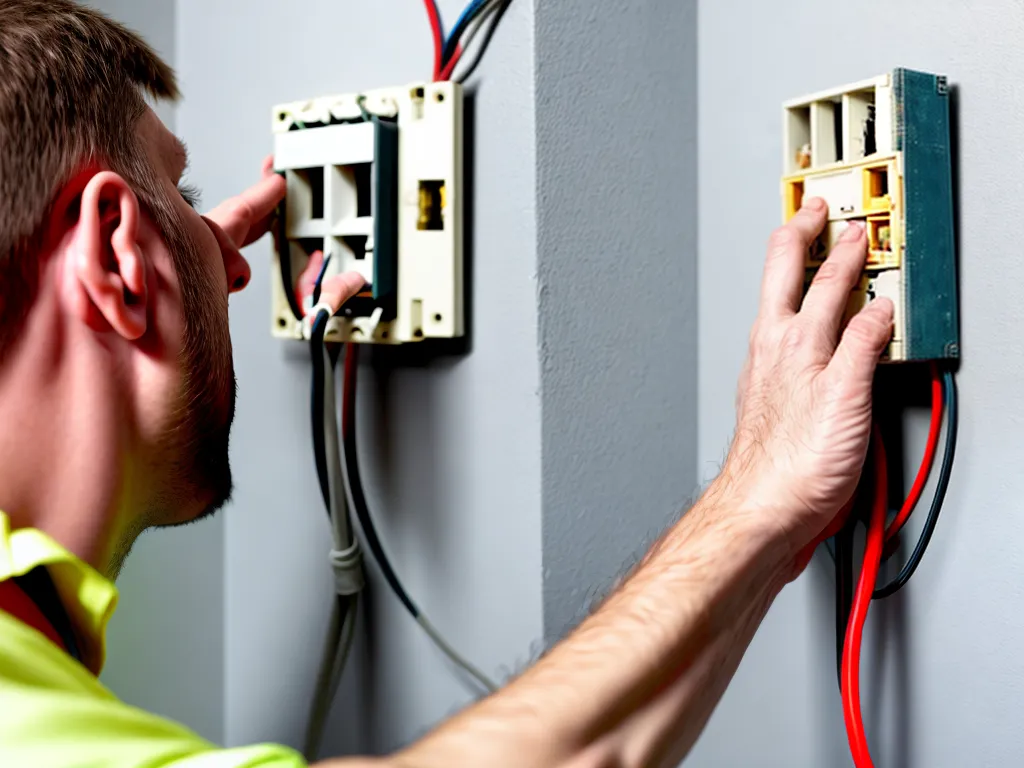
How to Safely Rewire Your Home Without an Electrician
Assess Your Electrical Needs
Before deciding to rewire your home, take stock of your current electrical system and determine if an upgrade is truly needed. Consider the following:
-
Age of wiring - Older homes with knob-and-tube wiring or aluminum wiring will likely need to be rewired for safety.
-
Number of circuits - Most modern homes have 200 amp electrical service with at least 30 circuits. If your home has fewer circuits, a rewire may be beneficial.
-
Voltage - Today's appliances require 110/120 volt power. If you have lower voltage, rewiring would help.
-
Electrical capacity - Do your lights dim or circuits trip when multiple devices are in use? This signals insufficient electrical capacity.
-
Grounding - Ungrounded outlets can lead to shocks. Rewiring will permit proper grounding.
-
Electrical panels - Outdated fuse boxes should be replaced with modern circuit breakers.
If your electrical system exhibits any of the above issues, rewiring is advisable for safety.
Develop a Rewiring Plan
Before starting, develop a detailed rewiring plan. This involves:
-
Mapping out the existing wiring and noting any defects.
-
Determining new circuit routes and locations for outlets/switches.
-
Selecting replacement wiring - copper or aluminum.
-
Calculating electrical loads and total required wire length.
-
Developing a circuit chart showing what each new circuit will feed.
-
Purchasing necessary supplies - wire, boxes, outlets, breakers, etc.
-
Obtaining any required permits. Many jurisdictions require permits for DIY electrical work.
A good rewiring plan is essential for an efficient, problem-free rewiring project.
Safety First! Turn Off Power at the Panel
Before touching any wiring, completely shut off the main power to the home at the panel. Turn off the main breaker and unplug all appliances. Test outlets with a voltage tester to be sure they are dead. Place tape over the breaker box so it cannot be turned on accidentally. Working on live wiring can result in severe shock or electrocution.
Run New Wiring
With the power off, you can start running the new wiring:
-
Carefully remove existing wiring if possible. This minimizes drywall patching.
-
Drill holes through joists and studs to route the new wires between outlets and switches. Use fire caulk to seal holes.
-
Install nonmetallic cable clamps where wiring penetrates framing members. This protects the wire from damage.
-
Use the correct wire gauge for the required electrical load. #12 or #14 gauge is appropriate for 15 amp household circuits.
-
Carefully organize and label wires at the panel for each new circuit.
-
Use wire nuts to join wires securely. Avoid electrical tape splices.
Take the time to run each wire properly. Rushed wiring leads to dangerous shorts and fires.
Install New Outlets, Switches and Panel
With wiring complete, you can install the visible components:
-
Mount new receptacle boxes for outlets and switches. Feed the wires inside and allow slack.
-
Install new receptacles and light switches, connecting each properly to hot, neutral and ground wires.
-
Adhere to minimum box fill limits. Cramming too many wires into a small box is hazardous.
-
For 240 volt circuits, use the right neutral/grounding configuration. Don't swap neutral for ground.
-
Replace the main circuit breaker panel if necessary. Connect each circuit wire securely to the right breaker/slot.
-
Add a separate grounding bar and properly bond neutral/ground connections as required.
-
Apply matching new wall plates and covers over each box when done.
Follow codes for proper outlet and switch mounting heights, especially around sinks where ground fault interrupters are required.
Inspect and Turn Power Back On
With the rewiring complete, take these final steps:
-
Visually inspect all connections and make sure wires are properly joined.
-
Check for loose wire clamps and secure boxes. Problems can lead to arcing/fires.
-
Have an electrician inspect if possible. They can catch any wiring errors.
-
Turn the main power back on but leave circuits off. Check each outlet with a tester before energizing.
-
Flip each new circuit on at the panel one at a time. Verify proper operation and no short circuits.
-
Consult your circuit chart to identify what each new breaker powers so circuits can be labeled.
With careful planning and attention to safety, you can successfully rewire your home. Proceed slowly, double-check everything, and get help if unsure.